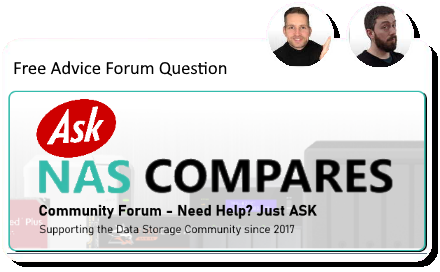08-07-2025, 05:16 PM
We are a small single-campus college and have been using a 4-bay QNAP TS-453Be 2TB drives Raid-5 for some IT storage, but mostly we leverage it as a repository for software package deployments and upgrades (PDQ Deploy). Our budget, and the cost of storage, is the primary reason we wouldn't just use a VM.
I'm looking for recommendations for a replacement, budget-friendly (Not cheap) replacement. We don't need a huge amount of storage, but I would like to get better speeds than 100mbps. It seems like SSD for caching would help. I'm not experienced with that setup. I'm not sure what size/specs the ssd's should be, if that is the way to go.
We occasionally do large transfers. Our largest custom software package that we'd deploy domain-wide would be Office 2024. The rest are usually upgrades of custom packages, or GPU drivers which can suck. We have 400 PCs but rarely need to push large packages all at once.
TLDR: Budget-Friendly, QNAP, better concurrent throughput
Thanks
I'm looking for recommendations for a replacement, budget-friendly (Not cheap) replacement. We don't need a huge amount of storage, but I would like to get better speeds than 100mbps. It seems like SSD for caching would help. I'm not experienced with that setup. I'm not sure what size/specs the ssd's should be, if that is the way to go.
We occasionally do large transfers. Our largest custom software package that we'd deploy domain-wide would be Office 2024. The rest are usually upgrades of custom packages, or GPU drivers which can suck. We have 400 PCs but rarely need to push large packages all at once.
TLDR: Budget-Friendly, QNAP, better concurrent throughput
Thanks





